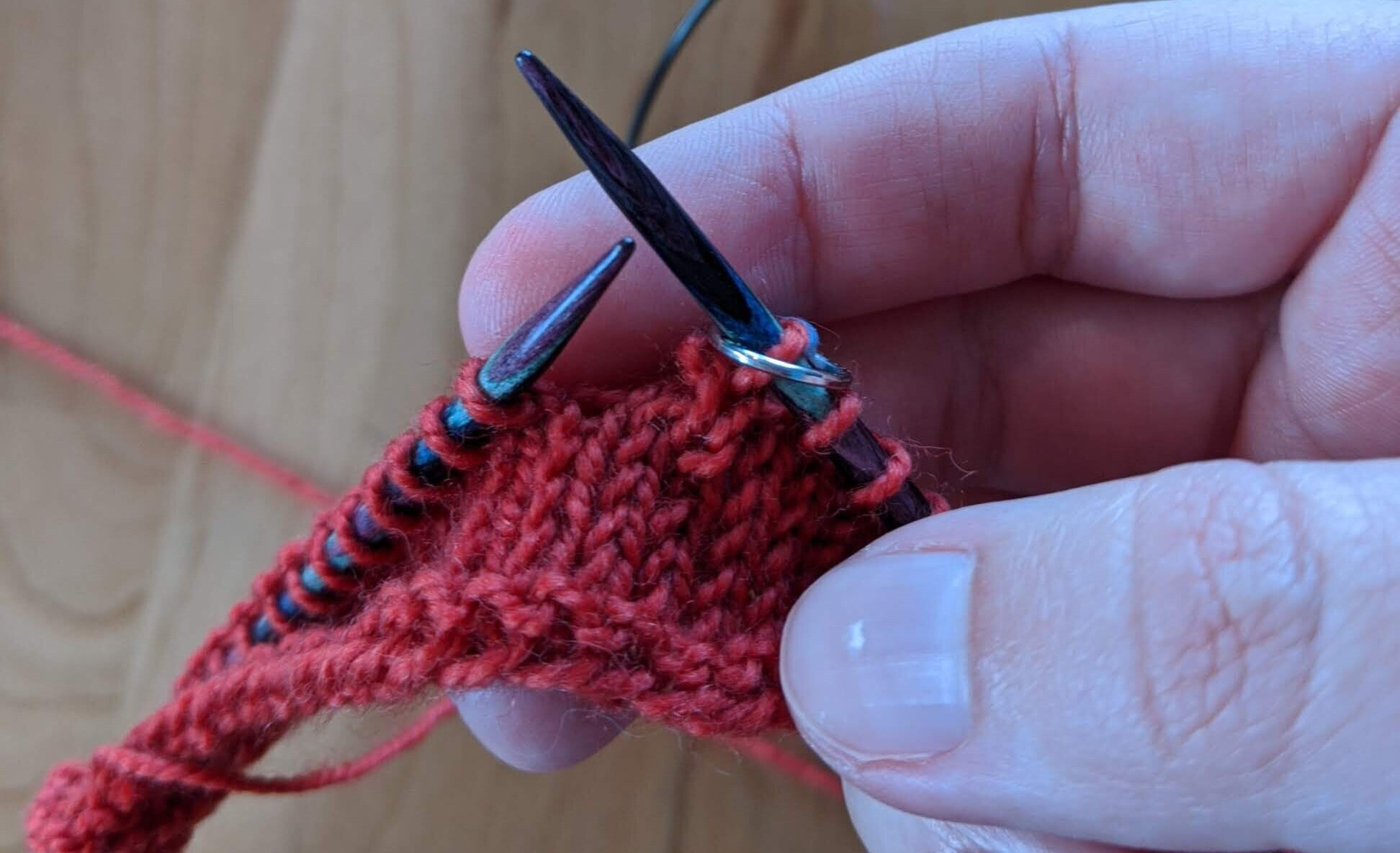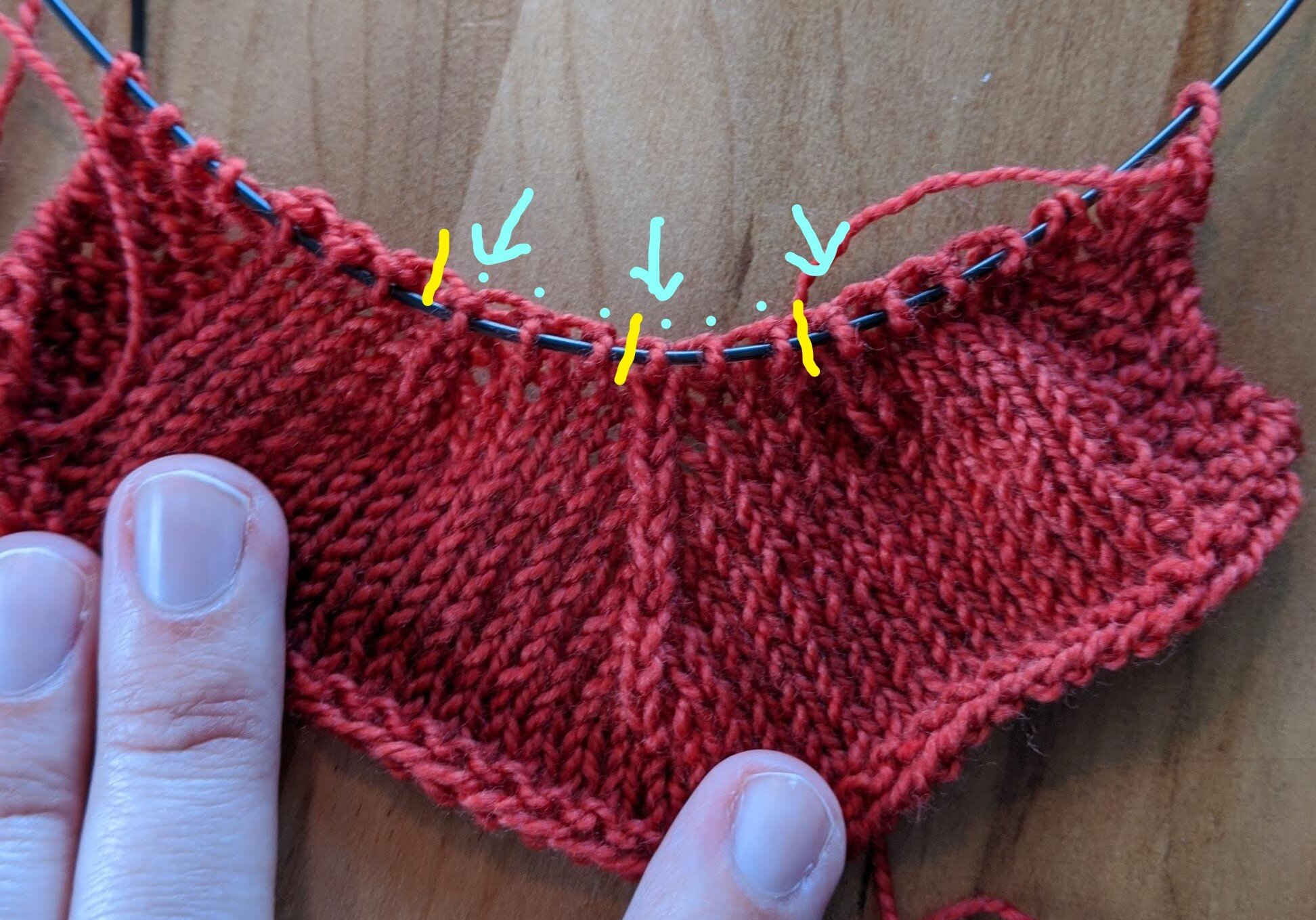I really love the stacked look of the centered double decrease (CDD), and when working crown decreases on a hat, I also like being able to combine the typical 2 decrease motions (k2tog and SSK usually) into 1 movement.
First, a refresher. The CDD is worked like so:
Slip next 2 sts together knit-wise. Knit 1. Pass 2 slipped sts over this stitch.
However, the nature of how CDDs are constructed means that, when you’ve placed markers indicating where the decrease should be worked, you can’t simply say “knit to 3 before marker, CDD, repeat,” as this would result in a weird diagonal. You have to place the stitch marker in the middle of the stitches that will be worked in the CDD. With a stitch marker involved, the CDD instructions would be more like:
Knit to 2 before marker. Slip next 2 sts together knit-wise. Remove marker. Knit 1. Pass 2 slipped sts over this stitch. Replace marker.
Kind of fiddly!
By learning to read the CDD stitch in your knitting, you can avoid the need for placing markers entirely, and live dangerously! This is how I knit the crown on my Little Bits Beanie, and I hope it helps you knit yours too.
Let’s look at some photos to get a sense of what’s happening. Unfortunately, there is no way to avoid the set-up round and the initial placing of markers to mark the sections of the crown of the hat, so you have to work that round. Here we are on the next round, knitting to 2 stitches before the marker. Keep in mind that the stitch just before the marker will always be the center stitch of the CDD.
Slip the next 2 sts knit-wise:
Remove marker and knit 1:
Pass 2 stitches over the just-knit stitch and replace marker after the CDD:
In the early stages of crown decreases, you’ll likely have a rest row in between decrease rows. So, here we come back to the CDD, having worked the rest row. We’re ready to work another decrease, so we stop 2 stitches before the marker again.
Let’s take a look at it without the marker:
You can hopefully see the CDD stitch, which stands up above the surrounding stitches because it’s got 3 stitches all stacked on each other underneath. This column of stitches will always be the center of the 3 stitches involved in the CDD. Thus, if basing your counting off of this visual, you’d stop when you have 1 stitch + this CDD stitch, then begin the “slip 2 together knit-wise.”
Here’s what it looks like once you have a stack of CDDs, including a few nearby as they slowly converge at the crown of the hat. Remember where the stitch markers are supposed to be with regard to the CDD stitch? Can you tell how many stitches there are “between markers”?
Here’s the same image, but with guidelines. The blue arrows indicate the 3 stacks of CDDs. The yellow lines indicate where the stitch markers would be. The blue dots show that there are three stitches between markers at this point. When counting stitches, count the stitches between the CDDs and include ONE of the CDDs in the count. In the case of the Little Bits Beanie, the CDD is at the end of each section, so you’d count from the BOR marker to the first CDD - that’s one section. Then, count from the stitch just after this first CDD to the next CDD, and so on, to ensure all sections have the same number of stitches.
Hopefully this helps you ditch the stitch markers and work CDDs with reckless abandon! If you have any questions, or anything is unclear, please feel free to leave a comment below.












